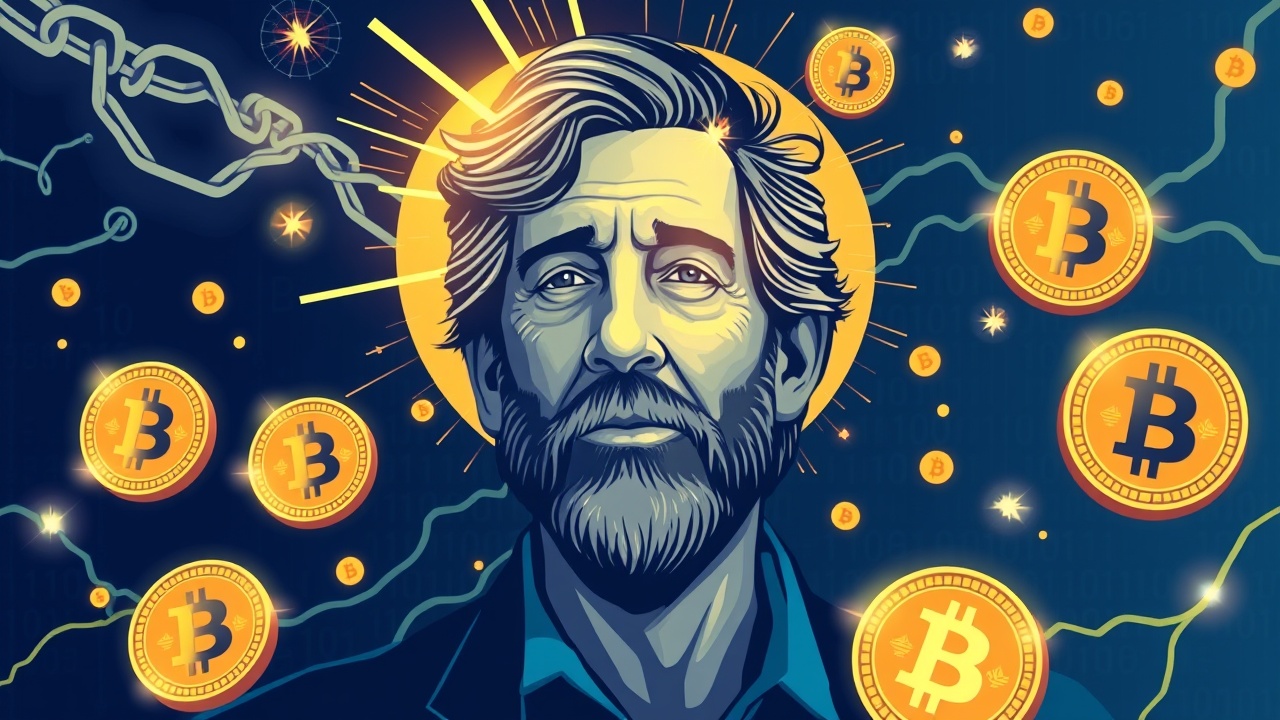Hal Finney: A Pioneer in Cryptocurrency
Foundational Role in Bitcoin’s Origin
Hal Finney, an influential figure in the cryptocurrency landscape, holds a foundational role in Bitcoin’s origin story. His deep involvement with the revolutionary digital currency, coupled with the ongoing intrigue surrounding the identity of Satoshi Nakamoto, has led many to regard Finney as a potential candidate for the pseudonymous creator. Finney’s early support for Bitcoin, marked by historic milestones such as being the recipient of the first transaction in its network, highlights his contributions to its advancement and the broader world of cryptography.
Early Life and Career
Born on May 4, 1956, in Coalinga, California, Finney’s exceptional aptitude for problem-solving and technology was apparent from an early age. The son of a petroleum engineer, he was the third kid in a family that encouraged intellectual curiosity. His knack for creating complex codes in elementary school laid the groundwork for his future endeavors in computing and cryptography. Finney pursued his education at the California Institute of Technology, completing his degree in 1979 before embarking on a varied career in software development. His projects included early video games and crucial security tools at PGP Corporation, where he enhanced digital privacy through innovations in encryption.
Involvement in the Cypherpunk Movement
Finney’s involvement in the cypherpunk movement during the 1990s positioned him at the cutting edge of the digital privacy discourse. His RPOW system addressed the double-spending problem in online transactions, a concept that would later influence Bitcoin’s design. Despite a rigorous career, he was beloved for his integrity and steadfast principles, qualities that were particularly evident when he faced a diagnosis of amyotrophic lateral sclerosis (ALS) in 2009. Even as his physical capabilities waned, Finney’s commitment to both his family and the cryptocurrency community remained unwavering.
Contributions to Bitcoin
He grasped Bitcoin’s potential early, joining the project shortly after Satoshi Nakamoto unveiled it in 2008. Finney not only established the first Bitcoin node apart from Nakamoto but also received a groundbreaking 10 BTC transaction from Nakamoto on January 9, 2009. His proactive approach included testing network operations, addressing software bugs, and suggesting improvements to the Bitcoin protocol. His writing and communication with Nakamoto often reflected shared ideologies concerning privacy and freedom, which stoked speculation about whether Finney might actually be Nakamoto himself.
Legacy and Controversy
This theory gathered traction in the early 2010s as researchers noted the striking similarities between the writing styles of Finney and Nakamoto.
However, while some believe he was part of a collective behind the pseudonym, others argue against this connection owing to clear distinctions in their programming styles, operating system preferences, and even Finney’s deteriorating health during Nakamoto’s active development phase.
Personal Life and Advocacy
Finney’s impeccable reputation extended beyond technical skills; he was admired for his family life, sharing a long and supportive partnership with his wife, Fran Maxey, with whom he raised two children. His dedication was evident even after his diagnosis, as he adapted to using eye-tracking technology to continue working and contributing to the cryptographic field.
Continued Impact
Despite enduring challenges, Finney’s legacy persevered after his death on August 28, 2014. His body was cryonized in hopes of one day being revived, in line with his beliefs in technology’s potential to revolutionize lives. His widow, Fran, remains active in ALS advocacy, helping keep his memory alive, while the Finney Freedom Prize honors him for his contributions to technology and civil liberties.
Hal Finney’s impact on Bitcoin and the broader digital currency ecosystem cannot be overstated. His work paved the way for future innovation, underscoring the critical intersection of technology, advocacy, and community in shaping the future of digital assets. Today, his name resonates not only within the narrative of Bitcoin’s inception but also symbolizes the spirit of resilience and progress in the ever-evolving world of cryptocurrency.

















